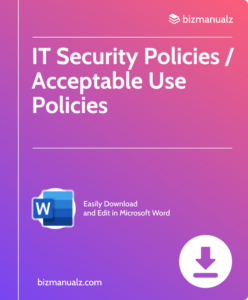CIO Data Security Protocols

Are you worried about the security of your company’s data? In today’s digital age, data breaches and cyber attacks are becoming increasingly common, leaving businesses vulnerable to financial and reputational damage. This is why implementing effective data security protocols is crucial for all organizations. CIO Data Security Protocols
What Is a CIO?
A Chief Information Officer (CIO) is a high-level executive who has the responsibility of overseeing and executing information technology strategies for an organization.
What Are the Main Responsibilities of a CIO?
The main responsibilities of a Chief Information Officer (CIO) include:
- Overseeing the organization’s data security protocols.
- Implementing IT strategies.
- Managing the IT team.
- Aligning technology with the company’s objectives.
Why Is Data Security Important for a CIO?
Data security is of utmost importance for a CIO, as it is their responsibility to protect sensitive company information, maintain customer trust, and comply with data protection laws. A single breach could lead to significant financial loss, legal consequences, and reputational damage, making it crucial for a CIO to prioritize strong security measures.
To stay ahead of potential threats, it is recommended to regularly update security protocols and conduct thorough risk assessments. With advances in technology and ever-evolving threats, it is important for Chief Information Officers (CIOs) to stay up-to-date and proactive in protecting their company’s data. In this article, we will explore the importance of data security protocols for businesses and discuss ways in which CIOs can effectively safeguard their company’s valuable information.
What Are the Common Data Security Protocols for a CIO?
As a Chief Information Officer (CIO), one of your primary responsibilities is ensuring the security of your organization’s data. This involves implementing various protocols and measures to protect sensitive information from cyber threats.
In this section, we will discuss the most common data security protocols that CIOs use to safeguard their company’s data. From encryption to employee training, we will cover the essential elements that every CIO should have in their data security strategy.
1. Encryption
Data security relies heavily on encryption. To ensure effective encryption, follow these steps:
- Assess Data: Identify sensitive data that requires encryption.
- Choose Encryption Algorithm: Select a strong encryption method, such as AES or RSA.
- Key Management: Develop a strong key management strategy to securely store and distribute keys.
- Implement Encryption: Use encryption tools to encrypt data both at rest and in transit.
- Regular Updates: Stay informed about the latest encryption practices and technology to maintain security.
In 2013, a major retail chain suffered a data breach due to inadequate encryption, compromising millions of customer records. This highlights the importance of robust encryption protocols.
2. Access Controls
- Implement role-based access control to restrict system access based on user roles and ensure proper access controls are in place.
- Utilize strong authentication methods, such as two-factor authentication, to enhance security measures.
- Establish access control lists to manage permissions and prevent unauthorized access to sensitive data.
- Regularly review and update access control policies to align with evolving security requirements and maintain effective access controls.
Effective access controls are crucial in safeguarding sensitive data. By enforcing strict access policies and employing robust authentication methods, CIOs can strengthen their organization’s data security measures.
3. Regular Backups
- Establish a regular backup schedule based on the frequency of data updates and the importance of the information.
- Choose reliable backup storage methods, such as cloud services or physical drives.
- Verify the integrity of the backup data through routine checks and test restores.
- Document the procedures for regular backups and ensure accessibility to authorized personnel.
- Implement automated backup systems to streamline the process and minimize human error.
Pro-tip: Be sure to regularly test the restoration process to guarantee that your backups are functional and reliable in critical situations.
4. Network Security Measures
Network security measures are essential for a CIO to protect sensitive data. Here are crucial steps:
- Implement Firewalls: Set up firewalls to monitor and control incoming and outgoing network traffic.
- Use VPNs: Utilize Virtual Private Networks to establish secure connections over the internet.
- Regular Updates: Ensure all network devices and software are regularly updated to address potential vulnerabilities.
Pro-tip: Continuously review and enhance network security to stay ahead of evolving cyber threats.
5. Employee Training
- Develop interactive training sessions that cover data security policies and procedures for employees.
- Host regular workshops to keep employees informed on the latest cybersecurity threats and best practices.
- Conduct simulated phishing attacks to educate staff on how to identify and prevent potential security breaches.
Promote a culture of vigilance and accountability towards data security within the organization to strengthen the overall cyber defense strategy.
What Are the Risks of Not Implementing Data Security Protocols?
In today’s digital age, data security is of utmost importance for any organization, especially for those with a Chief Information Officer (CIO) at the helm. However, failing to implement adequate data security protocols can lead to serious consequences.
In this section, we will discuss the various risks that organizations face when they neglect data security protocols, including data breaches, financial loss, and damage to reputation. By understanding these risks, CIOs can make informed decisions and take proactive measures to protect their organization’s valuable data.
1. Data Breaches
- Implement robust encryption measures for sensitive data to prevent data breaches.
- Enforce strict access controls to limit unauthorized entry to data systems and reduce the risk of data breaches.
- Regularly back up all data to prevent loss in case of breaches and ensure data security.
- Implement network security measures such as firewalls and intrusion detection systems to protect against data breaches.
- Provide comprehensive training to employees on data security best practices and protocols to prevent data breaches.
2. Financial Loss
Financial loss is a crucial concern when it comes to inadequate data security. If a CIO fails to implement strong protocols, it can result in significant financial consequences such as legal fees, compensation costs, and a decrease in market value.
To prevent financial loss, CIOs must make it a priority to invest in top-of-the-line security measures, regularly conduct risk assessments, and promote a culture of data security awareness among their employees.
3. Damage to Reputation
- Public trust erosion due to data breaches or leaks, affecting brand perception and damaging reputation.
- Negative media coverage leading to diminished investor and customer confidence and harming reputation.
- Potential legal consequences and lawsuits, impacting the organization’s credibility and reputation.
How Can a CIO Ensure Compliance with Data Security Protocols?
As a CIO, ensuring compliance with data security protocols is crucial to safeguarding sensitive information and maintaining the trust of stakeholders. This section will discuss the key strategies that a CIO can implement to ensure compliance within their organization.
From conducting regular audits and assessments to collaborating with other departments, we will explore the various ways a CIO can stay on top of data security protocols and stay ahead of potential threats. By following these protocols, a CIO can successfully protect their company’s data and maintain the integrity of their organization.
1. Regular Audits and Assessments
- Establish a scheduled timeline for conducting regular audits and assessments to evaluate the effectiveness of data security protocols.
- Utilize specialized software tools and technologies to automate the audit process, ensuring comprehensive coverage.
- Engage internal and external stakeholders to gather diverse perspectives and insights during the assessment.
- Document findings and implement corrective measures based on the regular audits and assessments to enhance data security.
2. Collaboration with Other Departments
- Establish open communication channels with other departments to understand their data security needs and foster collaboration.
- Collaborate with IT, legal, and HR departments to align data security practices and policies and emphasize the shared responsibility for data security.
- Conduct regular meetings and training sessions to ensure all departments are updated on data security protocols and promote a culture of cross-departmental collaboration.
Suggestions: Foster a culture of cross-departmental collaboration and emphasize the shared responsibility for data security.
3. Staying Up-to-Date with Industry Standards
- Stay up-to-date with industry trends by attending conferences, webinars, and workshops.
- Subscribe to industry publications and join professional associations to access updated resources and stay informed about industry standards.
- Network with peers and experts to exchange knowledge and stay informed about best practices in the industry.
- Engage in continuous learning through online courses and certifications to ensure you are knowledgeable about the latest industry standards.
Frequently Asked Questions

What are CIO Data Security Protocols?
CIO Data Security Protocols refer to the set of rules and guidelines that a Chief Information Officer (CIO) must follow in order to protect the sensitive data and information of an organization. These protocols are designed to prevent data breaches, cyber attacks, and other security threats.
What is the role of a CIO in implementing Data Security Protocols?
A CIO plays a crucial role in implementing Data Security Protocols. They are responsible for developing, implementing, and maintaining the protocols to ensure the protection of an organization’s data. They also oversee the training and compliance of employees with these protocols.
What are the main components of CIO Data Security Protocols?
The main components of CIO Data Security Protocols include risk assessment, data classification, access control, encryption, incident response plan, and regular security audits. These components work together to create a strong and comprehensive data security framework.
How do CIO Data Security Protocols help in preventing data breaches?
CIO Data Security Protocols help in preventing data breaches by implementing strict access control measures, regular security audits, and encryption of sensitive data. They also have an incident response plan in place to quickly address and contain any potential breaches.
What are some best practices for CIO Data Security Protocols?
Some best practices for CIO Data Security Protocols include regular employee training on security awareness, maintaining strong and unique passwords, implementing multi-factor authentication, and keeping software and systems up-to-date. It is also crucial to have a disaster recovery plan in case of any data breaches.
Can CIO Data Security Protocols be customized for different organizations?
Yes, CIO Data Security Protocols can be customized based on the specific needs and requirements of different organizations. Each organization may have different levels of sensitive data and risk factors, so the protocols may vary accordingly. It is important for a CIO to regularly review and update the protocols to keep up with any changes in the organization’s data security needs.
















Leave a Reply